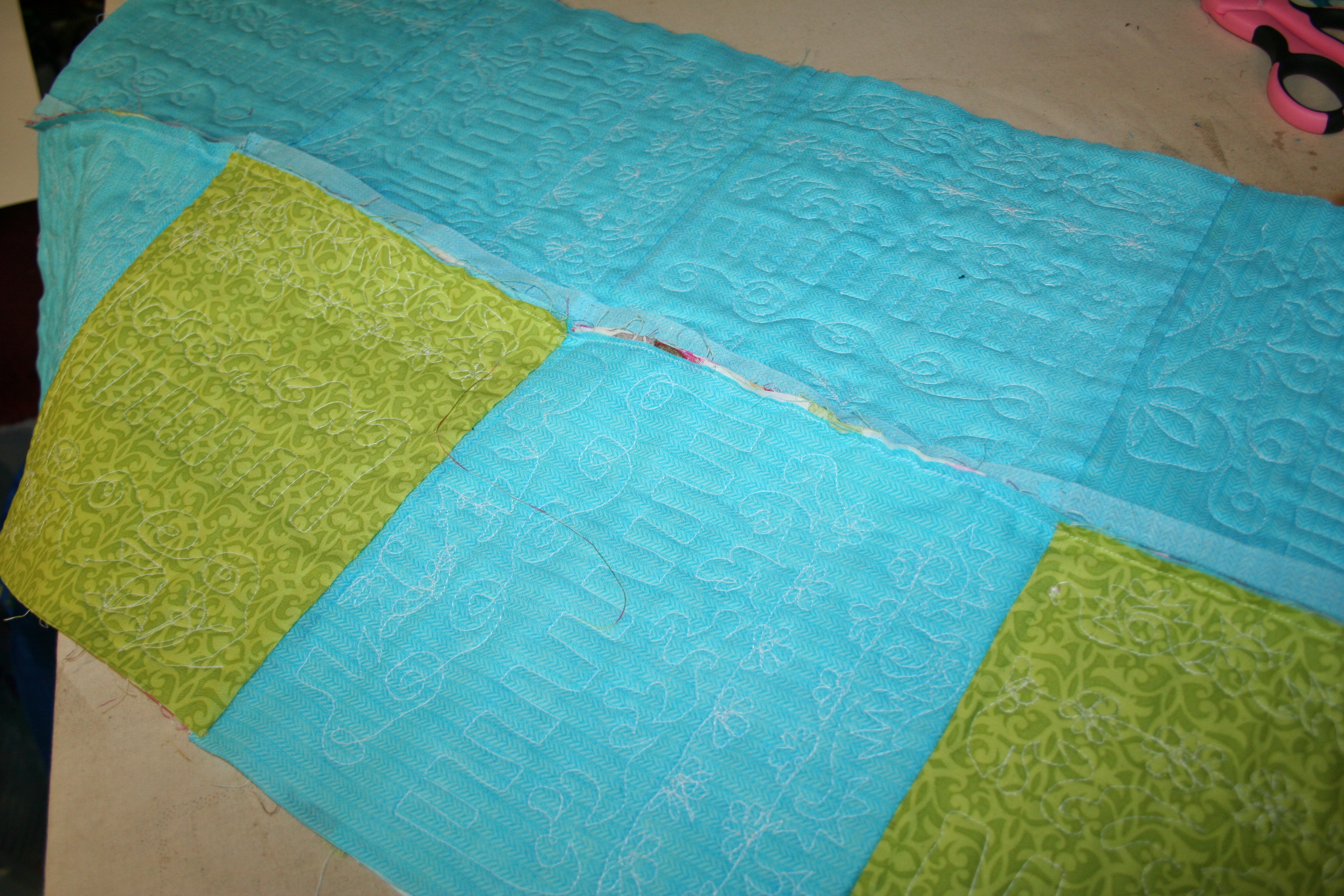Quilt-As-You-Go Quilt



Quilting is something that I absolutely enjoy. I’m a beginner yet, so it’s constantly challenging and fun and creative all at once. The one problem I have, however, with every quilt I make, is the fact that it is awful hard to machine quilt on just your regular, run of the mill sewing machine. It’s a giant workout, constantly pushing, pulling, and trying to keep track of a big rolled up hunk of quilt shoved into a regular sized sewing machine. As much as I would do just about anything for one of those giant, crazy awesome long-armed sewing machines specifically meant for quilting, I’m not really thinking that is going to happen any time soon. (I mean, really, what’s with these kids needing to eat all of the time? They are totally killing my sewing machine dreams!)
So as I was searching for a better solution to my quilting dilemma, I came across the idea of quilting as you go. The basic idea is to quilt all of your layers together, as you are piecing your quilt, so that you are working with smaller, more manageable pieces. There are many different ways you can do this, but the basic idea is all pretty much the same: you stack your pieced block, with batting and backing cut to the same size, sandwich them together and quilt them first, and then actually join blocks together.
Make a Plan

Sizing Your Blocks, Batting and Back




Once I pieced my top blocks, I trimmed them to be 9” PLUS seam allowance. I would really recommend using at least half of an inch around each side of each block. (I only used ¼”, and drove me totally bonkers and didn’t work out as well as I would have liked.)
When you have your top blocks trimmed, you will need to trim backing squares to be the exact same size as the top.
Once you have your top and backing cut, cut your batting to size. This part is a bit different… you want your batting to not have any seam allowance at all. If batting is running into your seam, you’ll have far too much bulk in your seams. For example, in my quilt, my batting squares were each 9” even.
Make a Sammich.

Once you have all of your blocks pieced and trimmed to size, you need to stack your sandwiches.
To stack them, you will need to start by laying your backing fabric, wrong side up, on your work surface.
On top of this, place your batting square. Make sure to place it in the center, with an even seam allowance around each side.
Once you have your batting placed, place your top block over it, right side up. Be sure to line it up carefully with your backing square below.
When you have all of your layers positioned, you need to baste them. You can just pin them, as I have done, or spray baste… whatever gets the job done. Usually I hate using straight pins to baste a quilt, but these small blocks require so little that it’s not a big deal to me.
Quilt!

How you quilt your blocks is entirely up to you. You can use straight lines or free-form quilt it… basically do whatever you are most comfortable with. The most important thing to remember is to not sew into your seam allowance. I did this in a few places, and it was a big pain in the rear end in later steps. It may not be a bad idea to take a marking pencil that is easily removed and mark around the edges so that you know where to stop.
Join Your Blocks


To join squares, place two blocks, right sides together. Carefully pin JUST the top layers together. You do NOT want to sew through your backing fabric. I found it easiest to either pin or press the backing out of the way while I stitched the tops together.
Press Your Seam



Finish Your Back Seams

I would definitely suggest that as you stitch your back, make sure not to leave your seams open on the top and bottom, so that when you join your rows together, you will be able to open your layers straight across.
Join Your Rows!


Finish It!
